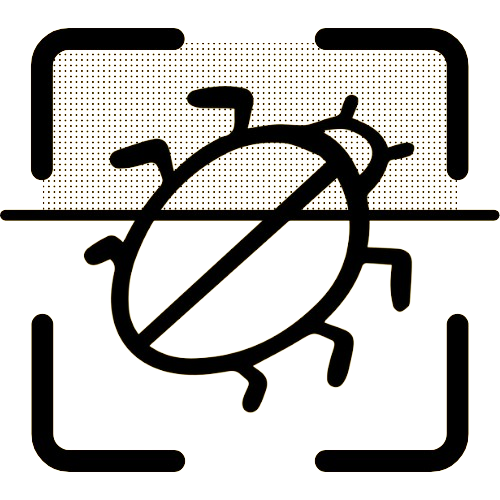Smart Home Monitoring: Using Technology to Detect Bedbugs
November 09, 2024
Smart Home Monitoring: Using Technology to Detect Bedbugs
In today's technologically advanced world, the nuisance and health risks posed by bedbugs can be efficiently managed through innovative bedbug detection technology. As these unwelcome guests continue to plague our homes, advancements in smart pest control are providing homeowners with the means to detect and manage infestations more effectively than ever before. Embracing AI bug detection and comprehensive home monitoring systems allows you not only to safeguard your living space but also to maximize the efficiency of pest management solutions.
Evolution of Pest Detection
Historically, pest detection relied heavily on manual inspections and educated guesses. Residents had to scrutinize their living areas for signs of infestation such as bite marks or stains. While some traditional methods remain effective, new technological interventions have brought about a revolution in pest detection practices. The integration of sophisticated detection methods into everyday living spaces represents a significant leap forward.
Modern Detection Technologies
With the rapid pace of technological innovation, several modern detection methods are now employed. These include sensors, cameras, and chemical detection devices, which facilitate early identification of pests. Bedbug detection technology, in particular, often employs AI-powered sensors that can identify the presence of bedbugs by detecting movement and heat patterns.
The use of smart pest control systems helps homeowners to maintain a vigilant and proactive stance against infestations. These systems provide instant alerts and status updates, enabling homeowners to act quickly and reduce the potential impact of infestations.
AI-Powered Solutions
Artificial intelligence has dramatically transformed pest control, making it more precise and effective. AI bug detection systems utilize advanced algorithms and machine learning to accurately identify the presence of bedbugs and other pests. These systems can differentiate between bedbugs and similar insects, thereby eliminating false alarms and ensuring that appropriate action is taken.
The advantage of AI-powered solutions lies not only in their accuracy but also in their ability to evolve. As more data is gathered from various environments, these systems continue to learn and improve, enhancing their efficacy over time. This makes AI solutions an indispensable part of any comprehensive pest management strategy.
Setting Up a Monitoring System
Installing a home monitoring system equipped with bedbug detection technology involves several steps. Initially, users must select compatible devices and strategically place them in high-risk areas known for bedbug activity, such as bedrooms and living rooms.
Next, integrating these devices with a centralized system is crucial for unified control and management. By syncing devices with a smart home network, residents can receive immediate alerts through their smartphones, allowing for rapid intervention.
Moreover, combining detection systems with the Bedbug Scanner App amplifies the monitoring capabilities by providing detailed insights and tracking data, thus enabling smarter decision-making.
Cost-Benefit Analysis
When considering the investment in bedbug detection technology, a cost-benefit analysis is essential. While the upfront cost of installing a sophisticated detection system may be significant, the long-term savings in potential pest control treatments and damage repair can be substantial.
These systems not only minimize the need for frequent professional extermination services but also preserve the integrity of your home environment. Additionally, the peace of mind afforded by continuous monitoring and early detection is invaluable.
Integration with Home Systems
To maximize efficiency, bedbug detection systems should ideally integrate seamlessly with other smart home systems. This synchronization allows for a consolidated control platform where everything from lighting to security is managed holistically.
Integration enhances the efficacy of bedbug management by utilizing the full capabilities of a smart home ecosystem to detect, report, and address issues swiftly. Moreover, it fosters a synergistic environment where technology operates in harmony, strengthening overall home security and comfort.
Future of Pest Detection
The future of pest detection looks promising, with continual advancements in AI and machine learning paving the way for more sophisticated and user-friendly detection methods. As devices become smarter and more connected, pest control will likely become even more intuitive, automated, and effective.
Emerging trends, such as the Internet of Things (IoT), will enable even greater connectivity and data collection, allowing more precise and personalized pest management solutions. This evolution will inevitably lead to smarter, greener pest control solutions that are less intrusive and more efficient.
Conclusion
Incorporating advanced bedbug detection technology into your home is no longer a luxury—it’s a necessity. The shift towards smart homes equipped with sophisticated pest control systems marks a new era in home management. With AI bug detection, you can protect your home environment and enjoy peace of mind knowing that you have the latest in pest management at your disposal.
Upgrade your home protection with AI and embrace the future of pest detection. By doing so, you not only enhance the safety and comfort of your home but also safeguard your investment in a cleaner, healthier living space. Begin your journey towards a pest-free environment today by exploring innovative solutions at Bedbug Scanner.
